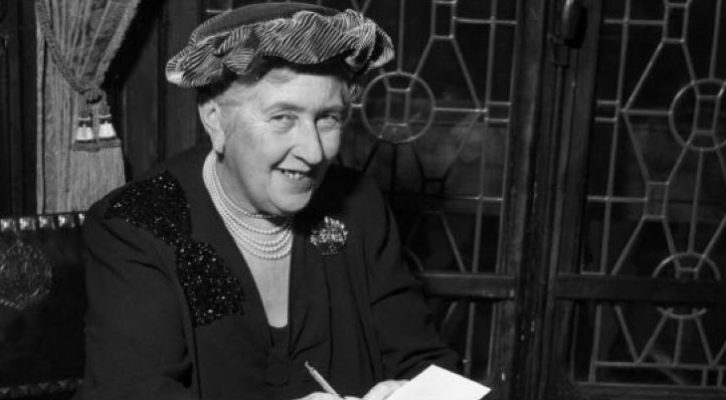
The Shape of His Stories: In Praise of Edward P. Jones
Elizabeth Poliner Returns to Three Stories in Lost in the City
It’s always a good time to celebrate the beauty and poignancy of Edward P. Jones’s fiction but his 70th birthday makes such a celebration especially right. Lost in the City, Jones’s first book, a quiet wonder—a book I’ve read countless times, taught countless times, and discussed with many other writers who invariably love it as much as me—contains stories about African Americans living in working class neighborhoods in Washington, D.C. in the 50s and early 60s. Of the collection’s fourteen stories all but two follow a similar character arc, whereby a story’s protagonist confronts circumstances that ultimately take him or her to a moment of profound human vulnerability. In this way, one after the next, the stories are simply heartbreaking.
Despite this pattern, each story feels unique. Multiple forces create this effect, including Jones’s ability to imagine characters so vividly that each one feels as clear and real as you and me. Jones also generates distinctness by varying the ages of his protagonists. As with Joyce’s Dubliners, Lost in the City begins with stories of younger people, and then, as the stories progress, so too do the ages of the main characters. With that, the circumstances they find themselves in varies too. The first day of school confronts one young character while the loss of a teenage child confronts an older one. A third way that Jones keeps his stories fresh is by varying their internal structure, giving them unique shapes. It can be helpful for story writers to notice what often goes unnoticed: how varying the structures adds so much vitality to the collection, and by looking at this myself I came to admire the craftmanship of Lost in the City even more. Three stories, detailed below, will show what I mean.
The first is “The Night Rhonda Ferguson was Killed.” Here, the title does a lot of work, hanging over the story’s events like a dark cloud. Meanwhile, the story takes us into the life of Cassandra Lewis, a pugnacious, loud-mouthed, and orphaned high school student who has found a best friend in her classmate Rhonda Ferguson and a much-needed surrogate family in Rhonda’s family. The day of the story, Rhonda, a gifted singer, looks to be finally signing a record deal. Everyone knows Rhonda is to be a huge success. A short scene near the story’s start lays out this information and shows us the loving relationship between Cassandra and Rhonda, and Cassandra and Rhonda’s father. We see, too, how in their company Cassandra, who can be brash and even verbally violent, softens. She’s called “Baby girl” by Rhonda’s father and she calls him, in turn, “Daddy Ferguson” as she promises him and Rhonda that she plans to stay in school even if Rhonda is away making it big. Referencing her homelessness, she also tells them she’s got a place to sleep that night at her sister’s.
After this scene a whole lot of nothing happens. By nothing I don’t mean that the story is boring; it’s anything but. But Cassandra parts ways with Rhonda and ends up getting roped into driving another classmate, along with two other girls, from their D.C. neighborhood near Capital Hill all the way across the river to Anacostia where the classmate is to deliver some goods to her father. The girls are fed a meal before they go, they stop along the way to visit two other schoolmates, they spend time flirting with some boys they run into, their car breaks down and gets fixed, they bicker and then make up. The night Rhonda Ferguson was killed, we find out from this essentially non-eventful journey, is a night that’s pretty ordinary. And that’s just it. When the girls finally return hours later to their neighborhood, the killing has happened, Rhonda has been shot dead by her boyfriend, and the event hits the reader the same way it hits Cassandra: as wildly out of the blue. Cassandra’s shock, her sense of loss, and the deepening of her homelessness, is the poignant vulnerability we see at the end. But we’d never feel her pain without the long ramble of a journey that comprises the story’s narrative structure.
The story’s main plot line takes us right to the moment of the robbery, and in that sense the story’s structure is a chronological progression toward that end.
“Young Lions” also involves a relatively young protagonist, Caesar Mathews, about twenty, and living with his girlfriend, Carol. We learn from the start that Caesar isn’t a good man, not at all. In his personal life he cruelly withholds his love for Carol and occasionally, indifferently, cheats on her; and in his professional life he’s a thief who, while stealing, has killed more than one person. Jones shows us all we need to know about Caesar’s depth of depravity with the telling detail that Caesar “liked remembering” these acts of murder.
As part of a crime ring, Caesar is currently involved in a scheme to rob a mentally challenged woman of her money as she deposits her pay check at the week’s end. To successfully and easily follow-through on his intent, he’s been following this woman for some time, learning her habits. The story’s main plot line takes us right to the moment of the robbery, and in that sense the story’s structure is a chronological progression toward that end.
The story is broken into five parts, and it’s late in the story, in part four, where Jones finally interrupts the chronology and includes back-story about how Caesar turned to crime. It happened gradually, following his mother’s death when he was seventeen. The loss unmoored him, and in that state he befriended his cousin Sherman, already involved in crime. The loss of his mother also left Caesar defenseless in the face of a strict, unfeeling father, and following a night where his father literally kicked him out of the house after Caesar had come home late, Caesar moves in with Sherman, eventually finding in Sherman’s lawless life a life of his own.
Sometime after Caesar has settled in with Sherman, the two return to Caesar’s home with the intent that Caesar gather his old belongings. As horrible as we by then know Caesar to be, the scene brings some humanity to him. Jones writes: “[A]s Caesar went through the rooms on the first floor, [he] touched nearly everything along the way—a lace piece made by his grandmother on the back of a chair; a drawing of the house signed and dated by his sister taped to the refrigerator; the kitchen curtains he had helped his mother put up. In a corner of the kitchen counter he found wrapped in a rubber band the letters he had been sending to his father; only the first one had been opened.” Upstairs, when Caesar enters his sister’s bedroom “he touched the heads of the three stuffed animals sitting on the pillows of her bed. In the room he had shared with his brother, he took as many of his clothes as he could carry, his hands shaking each time he picked up an item.” With these details we learn that Caesar’s connection to his family is alive and still strong.
Section Five takes us to the moment of robbing the mentally challenged woman. Caesar has bullied his girlfriend Carol into helping him, and Carol simply befriends the woman and in so doing manipulates her into giving away her money. But after the act Carol is changed. She no longer loves Caesar. She hates what she’s done and hates how Caesar has used her. This woman who has truly loved Caesar finally ends their relationship.
This is a story about belief, and given that each woman believes that the noise of the storm is the voice of God, about how that voice is interpreted.
In a remarkable last paragraph Jones takes us away from Caesar’s depravity and into Caesar’s heart, that place where he still feels the ache of his mother’s loss, compounded now by the loss of Carol. She’s left and Caesar feels alone. He’s once again unmoored, desperate for connection. Jones writes: “He took out the address book, but found he could not read the names of numbers under the feeble streetlights. He hurried, hoping for a telephone booth where the light would be brighter. He began to run, and as he ran, he kept trying to read the names and numbers, but the rain was now turning them to blurs. He did not know what was in the air. He only knew that tonight would not be a night to be without shelter.” How Jones manages to salvage even this much humanity from such a guy-gone-wrong is the story’s ultimate achievement, which hinges on the narrative structure of a delayed flashback.
An entirely different narrative structure—competing monologues—shapes “A Dark Night,” where our protagonists are two older women, Beatrice Atwell and Mrs. Garrett, once friends but currently at odds. In their apartment building they attend a prayer meeting with two other women. It’s storming outside, thunder and lightning, and Jones begins the story telling the reader that all four women “had been raised to believe that such weather was . . . the closest thing to the voice of God. And so each in her way listened.”
This is a story about belief, and given that each woman believes that the noise of the storm is the voice of God, about how that voice is interpreted. To grasp this understanding we hear two told-stories, and it’s with this old device of the story-within-the-story that Jones fleshes out the meaning of Beatrice’s and Mrs. Garrett’s beliefs.
Once it becomes clear to the prayer group that their reverend will not make the meeting, the women settle into conversation. The weather, not surprisingly, is up for talk, and eventually Beatrice tells the other woman about a time when she was a teenager and lightening struck an entire family of her relatives. She witnessed this: an entire family, still sitting together in a circle, all but one dead, and the clear, black line of lightening that made its way from one person to the next.
Beatrice’s dramatic, frightening tale—told with all the flourishes of a natural story-teller—silences the women until Mrs. Garrett interrupts with the platitude, “the Lord works in mysterious ways.” Mrs. Garrett then tells the story of her religious conversion, the night she was saved, a story, unlike Beatrice’s, that the women have heard before. In contrast to Beatrice’s tale, Mrs. Garret’s is flat, boring, and ineffectual, despite its optimistic conclusion that Mrs. Garrett, since then, has walked in the light of the Lord. Only Mrs. Garrett is moved by her story.
I’m tempted to say that the picture of these two old women is almost too poignant to bear.
The prayer meeting finally ends. Yet the storm doesn’t. The story jumps to four in the morning and Beatrice—who long ago learned to fear a God who could inexplicably kill an entire family in an instant—is getting ready to lock herself in her bathroom out of terror of the God she hears in the storm. But before she does, Mrs. Garrett, finally stripped by the storm of the comfort of her platitudes, and also afraid, comes to Bea’s apartment, wanting to be let in. Though Bea no longer likes Mrs. Garrett she still lets her in, and the two old women find their way to Bea’s bathroom.
There, in utter darkness, they wait out the storm. In Jones’s words: “Mrs. Garrett began to pray, a long, monotonous mumble of words. Once or twice a boom would produce a small yelp of surprise from each woman, but they did not comfort one another. Over time, the intensity of the thunder grew until it was like a pounding at the bathroom door. And each time it pounded, the women would look toward the door as if they were making up their minds whether to get up and answer it.” These are the story’s last lines, and I’m tempted to say that the picture of these two old women, enemies, locked together in terror at the voice of a God who just might snatch them from life into death, is almost too poignant to bear, except that I could say that about all the other endings too.
So here we’ve had three examples of similarity and difference, the similarity of truly sad endings, but the uniqueness of stories that take such different shapes. A whole lot of nothing, a delayed flashback, and competing stories-within-stories are just three of Jones’s wonderful narrative strategies, but there are others, many others, and that fact is so much a part of the hidden magic, and the enduring strength, of this beautiful collection.
I’m lucky enough to be friends with this wonderful writer and I’ll close with this: Happy Birthday, Edward P. Jones. Whatever the shape of your life, may it be filled with joy and may it be long.
Elizabeth Poliner
Elizabeth Poliner is the author of As Close to Us as Breathing, a novel (winner of the 2017 Janet Heidinger Kafka Prize in Fiction and an Amazon Best Book of 2016); Mutual Life & Casualty, a novel in stories; and What You Know in Your Hands, a poetry collection; and Sudden Fog, a poetry chapbook. She is an associate professor at Hollins University, where she currently holds the Susan Gager Jackson Chair in Creative Writing.



















